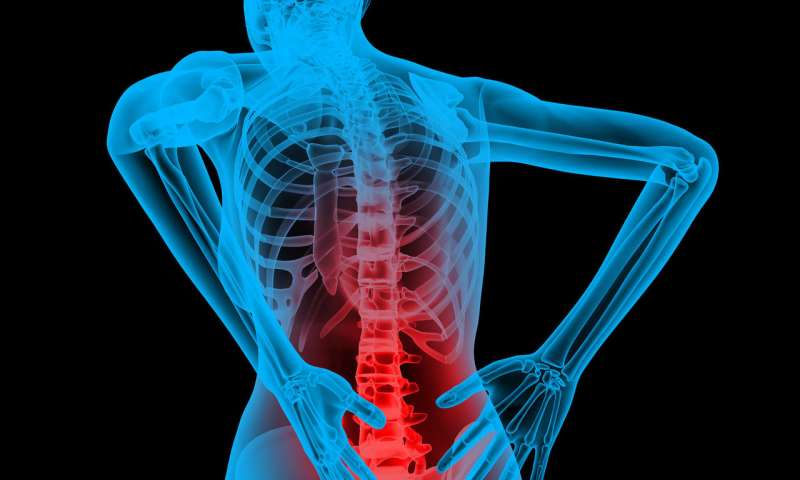A nationwide part II medical trial, coordinated out of Tufts Medical Heart in Boston, has decided {that a} topical cream grew to become extraordinarily efficient in reversing the results of vitiligo, a fairly commonplace autoimmune ailment that causes lack of pores and skin pigmentation. The topical utility of the medicated cream, ruxolitinib, which is at the moment used as an oral remedy for optimistic blood issues, ended within the sizeable enchancment of facial vitiligo signs in practically half of-of the trial’s members. Outcomes of the medical trial have been offered by the use of David Rosmarin, MD, Dermatologist at Tufts Medical Heart and Major Investigator for the observe, on Saturday, June 15, on the World Congress of Dermatology in Milan, Italy.

There isn’t any acknowledged motive for vitiligo, a dysfunction during which the immune system assaults pigment cells throughout the body. Vitiligo may additionally fluctuate from delicate to excessive and could be positioned in all places on the body, although it typically influences uncovered areas, together with the face and palms. Whereas vitiligo shouldn’t be obvious at supply, roughly half of-vitiligo sufferers settlement the ailment earlier than age 20.
Roughly 50 million human beings — one % of the worldwide populace — endure from vitiligo, corresponding to musical artist Michael Jackson, actor John Hamm, model Winnie Harlow, and comedian Steve Martin. Vitiligo influences all ethnic teams equally however is additional obtrusive in ethnic minorities with darker pores and skin. No FDA-authorized re-pigmenting cures for vitiligo presently exist.
The 2-year have to have a look at the biggest randomized managed vitiligo check out ever carried out, enrolled 157 victims at 30 web sites throughout America.-“Present remedies, which embrace phototherapy, topical corticosteroids, and calcineurin inhibitors, have restrained efficacy, and phototherapy treatment could be a burden for sufferers to should use a gentle container or 3 instances in keeping with week. Sadly, there may be typically a social stigma related to vitiligo, and it could take a good-sized psychosocial toll on victims,” acknowledged Dr. Rosmarin.
Contributors obtained daily or two instances daily topical utility of each ruxolitinib or placebo to the neighborhood of pores and pores and skin affected by vitiligo. About half of the very best dose of ruxolitinib victims observed a statistically appreciable improvement of practically 50 % of their facial vitiligo, as in comparison with 3 proportion who observed this diploma of improvement throughout the placebo establishment. Uncomfortable side effects of topical software program of ruxolitinib have been delicate and included redness and irritation on the applying web site and delicate pimples.
Topical ruxolitinib has the potential to alternate the best way vitiligo is handled. Not easiest is it efficient at depigmenting the pores and skin, nevertheless it has a notable safety profile,” acknowledged Dr. Rosmarin. “We are also constructive that many vitiligo sufferers may additionally see a good higher response with steady ruxolitinib utilization over a chronic time period, blended with phototherapy and daylight publicity. Our hope is that this remedy, in the long term, could also be a recreation changer for the lots of of hundreds of people worldwide affected by vitiligo.
Most cancers is an uncontrolled progress of cells often occurring when regular cells endure genetic mutation in a sustained method and for extended durations. There’s a failure on the cells to cease dividing and rising and from present process a programmed demise. There are practically 200 various kinds of recognized cancers. Most cancers causes embrace heredity, tobacco smoke, radiation; ultraviolet radiation from the solar; meals toxins; and environmental chemical compounds. Most cancers outcomes when these causes result in a rise in oncogenes and discount in tumor suppressor genes, DNA restore genes, and self-destruction genes.
There are 5 fundamental sorts of most cancers which embrace: 1) Carcinoma, which ends up from pores and skin and linings of organs and physique programs [adenocarcinoma; basal cell carcinoma; squamous cell carcinoma; and transitional cell carcinoma] 2) Sarcoma, which develops in connective tissue [bone, cartilage, fat, muscle and blood vessels] 3) Leukemia, which develops within the bone marrow 4) Lymphoma and myeloma, which develop within the immune system and 5) Tumours of the mind and spinal twine [glioma, astrocytoma].














